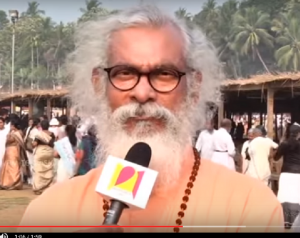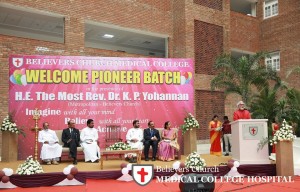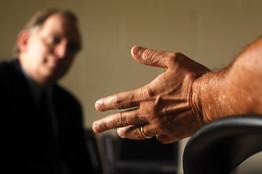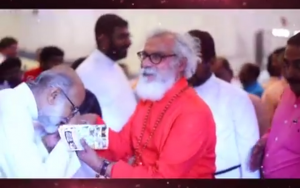In a May 14 2015 staff meeting, a Gospel for Asia staffer asked why GFA regularly asked for funds since so much money was just sitting in banks in India. I understand the point of the question. If GFA has millions sitting in banks unspent, then why bother donors for more money? To answer, GFA officials complained that all funds have to be spent on donor designations which can be tracked here and in India. This question and the answer are relevant because in the current RICO lawsuit, GFA defendants are now saying they are having great difficulty tracking down where the U.S. donations are spent. Questions about how funds have been spent are at the center of the federal fraud case brought by Garland and Phyllis Murphy against GFA.
GFA Told to Produce Documents
In a February court order, federal judge Timothy Brooks scolded GFA for insufficient answers to requests from plaintiffs for answers to questions about where funds have been spent. Specifically, Brooks wrote:

Furthermore, despite consistently telling donors for years that 100 percent of donations went for the purposes designated, now attorneys for GFA want to revise history. In the February 28 order, Judge Brooks summarized the discovery process and pointed out that GFA had originally promised to account for specific donations, but then noted that GFA had backed away from that stance (see footnote below).
 If GFA now claims they never promised to use donations for designated purposes, they will need to explain this very clear message to staff on May 14, 2015. In that meeting (a link to the audio is below), K.P. Yohannan and David Carroll said donations made for specific items were held until those items could be purchased. Carroll also added that GFA in Asia had reports to verify these expenditures.
If GFA now claims they never promised to use donations for designated purposes, they will need to explain this very clear message to staff on May 14, 2015. In that meeting (a link to the audio is below), K.P. Yohannan and David Carroll said donations made for specific items were held until those items could be purchased. Carroll also added that GFA in Asia had reports to verify these expenditures.
GFA Staff Q&A Meeting
In this meeting, GFA founder, CEO, and Metropolitan Bishop of the Believers’ Church K.P. Yohannan, then COO David Carroll, and other leaders

addressed staff questions about controversies just beginning to swirl around GFA. To listen to the entire exchange, click through to the audio. Because GFA has threatened Patheos with legal action on previous occasions, I am hosting the audio elsewhere and will describe it below.
Initially, David Carroll read this question: “We always pray for more funds because we say the ministry could do so much more if we had it. Why is the ministry sitting on so much in India ($94 million per FC-6 reports)?” Carroll explained that the FC-6 reports are not audited financial statements and are required to show what money comes into India. He said GFA-USA has nothing to do with the preparation of the report.
He then said the funds going into India are restricted and have to sit in an account until the use can be fulfilled. He used the example of donations for bicycles. Funds given for bicycles have to sit in an account until they can spend the money on bicycles according to Indian law. Even if an earthquake happens in Nepal and funds are needed, those bicycle funds can’t be used for earthquake relief.
He said the balance in India was about $7 million, not the $94 million claimed by the questioner.
He said, “We cannot spend the money until we can spend it on the project for which it was designated and that’s important.”
Yohannan declared, “Absolutely every designation is fulfilled. If not, the guys who are responsible for it, the guys in India, they go to jail.”
Carroll finished the question by saying:
As a former auditor, I’m always wondering, so did the money that someone gave for a blanket for a cold person in North India, is that sitting somewhere, does somebody know about that blanket that’s given like that amount? And we’ve asked that question of our Asian office and they’ve said, ‘yes, we actually have a report that mirrors your report here.’ So yes, if a blanket was given here but it hasn’t yet been given because it’s warmer there or whatever the reason, then the money is sitting there and able to be accounted for when it goes out.
Why Is It So Hard Now?
When reassuring staff in 2015 that donations were being used as promised, GFA leaders were quite convincing. When addressing discovery in a 2018 RICO case, a federal judge appears to be frustrated with GFA’s inability to do what they promised. These inconsistencies were exposed months after the May 2015 staff meeting.
Later in 2015, the Evangelical Council for Financial Accountability did an investigation which ended with the expulsion of GFA from membership. In their September 2015 report*, the ECFA found that the GFA’s field partners banked foreign contributions for years while local funds went to meet designation from donors. Because of this procedure it was “extremely difficult for GFA to demonstrate that it has exercised appropriate control of the funds” donated by U.S. donors.
David Carroll told staff that GFA’s field partners had $7 million on account. ECFA’s report found the amount to be $186 million at about the time of the staff meeting. From the ECFA report:
Allegations were made that GFA had upwards of $150 million in partner field accounts, far more than necessary to provide appropriate operating reserves. During our visit on June 3, ECFA was informed that GFA field partner cash reserves were approximately $7 million. After ECFA requested detailed documentation of cash balances held by foreign field offices, on June 29, we discovered that GFA’s field partners had $259,437,098 on hand at March 31, 2014 and approximately $186 million in June 2015.
In the ECFA report, GFA acknowledged that solicitations are more specific than expenditures. I wonder if GFA’s attorneys have read this report.
GFA solicits funds for narrower purposes than the eventual expenditure of the funds. During ECFA’s review on August 12, GFA staff provided a document to demonstrate the flow of funds from GFA to field partners. ECFA learned that donor-restricted donations are appropriately tracked by particular revenue classifications. However, we also discovered, and it was confirmed by GFA staff, that the disbursement of the gifts are tracked in much broader categories. For example, donations were received and tracked for 38 different specific items including kerosene lanterns, bio sand filters, chickens, manual sewing machines, blankets, bicycle rickshaws, and others, but related expenses were only tracked as “community development.” In other words, donations were raised for 38 specific items, with the donations pooled for expenditure purposes instead of expending them specifically for the purposes raised.
ECFA did not find any evidence that donors to the 38 different giving categories had awareness that their gifts were grouped and used in a broader category than the specific categories in which the gifts were raised. ECFA’s staff raised concerns regarding GFA’s compliance with ECFA Standard 4, 7.1, and 7.2 in raising funds for a particular purpose but then failing to document the actual use of those funds by the particular donor-restricted purpose.
Subsequent to this conversation, on August 16, GFA staff indicated that GFA field partners will begin tracking expenditures by specific item accounts to provide adequate transparency as to the use of designated funds.
*This report was not made public by the ECFA or GFA, but was released to me by Gayle Erwin, former GFA board member who resigned from the GFA board over GFA’s misconduct.



